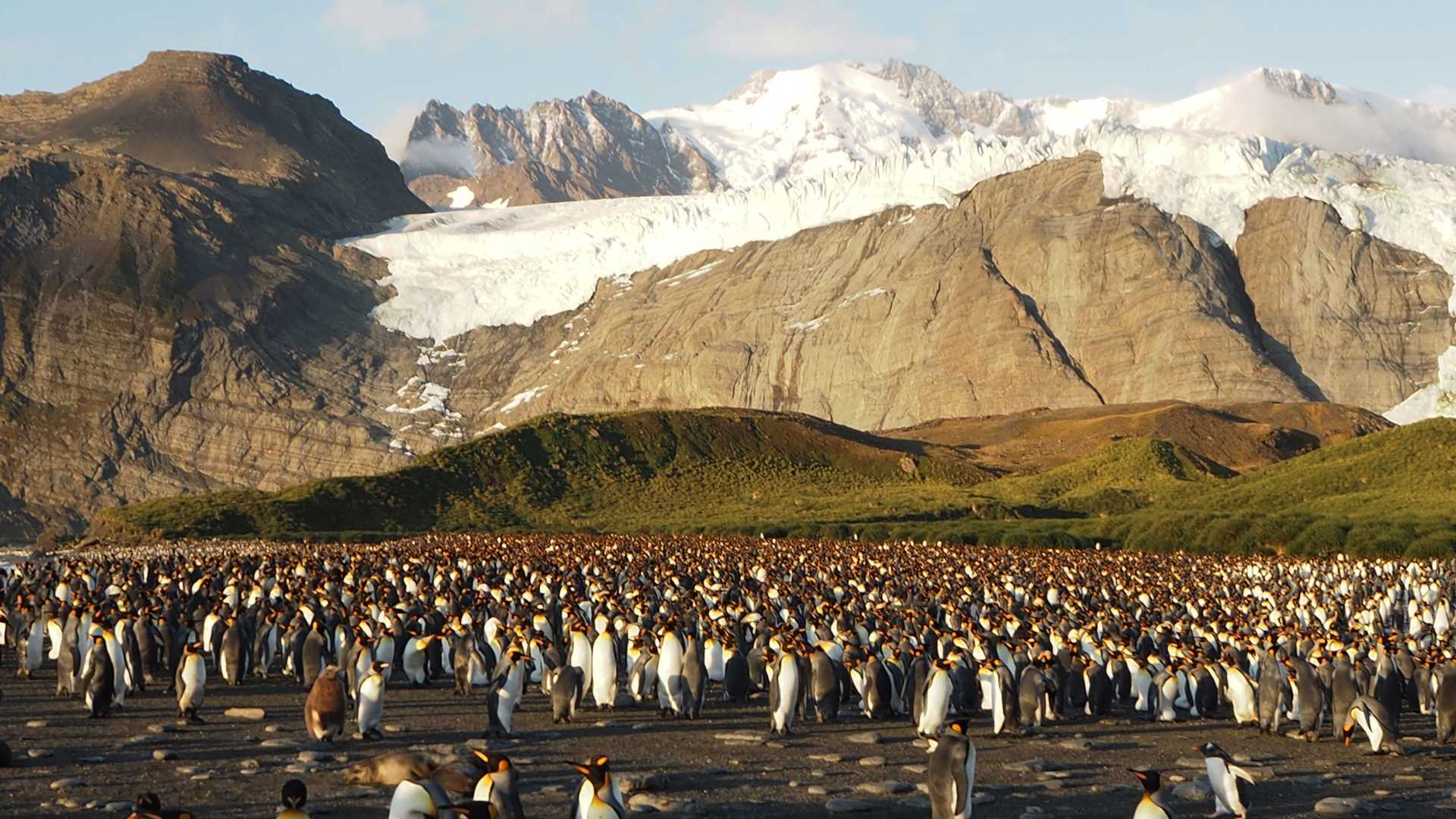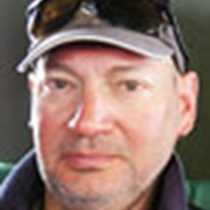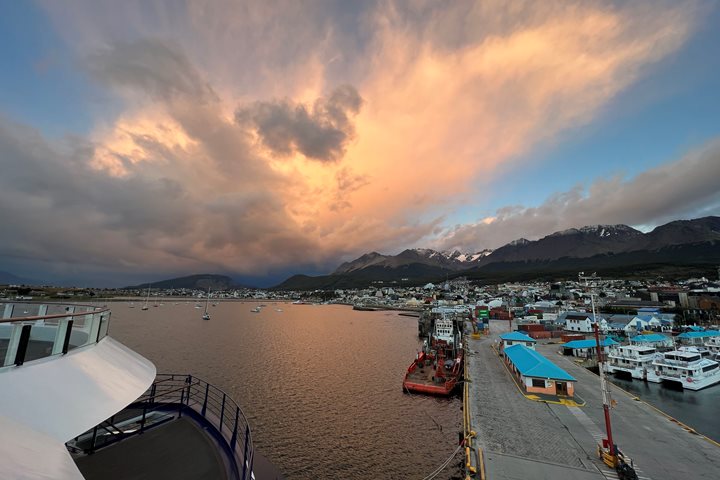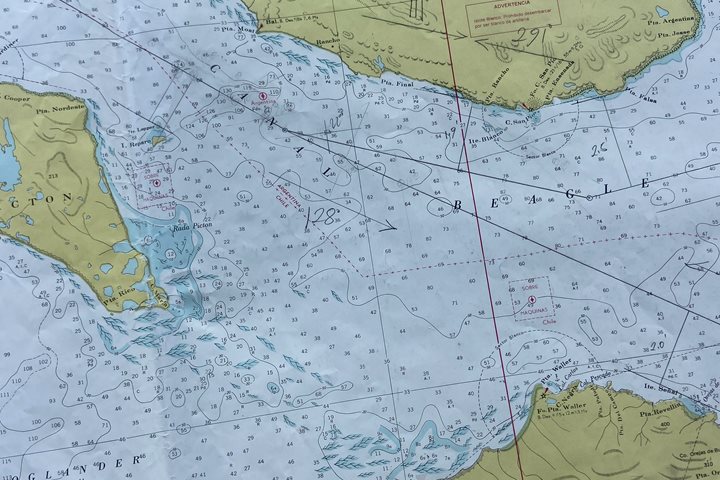54° 37.39’ S, 035° 53.06’ W
The pre-dawn wakeup call did not discourage us from getting out to the beach at Gold Harbor in time to watch the sunrise. Hot drinks and pastries before disembarkation made the exercise easier to handle. Ashore we were greeted by the welcoming committee of moulting elephant seals whose sheer bulk and disregard for any other life form were impressive.
We waited while the sun rose, then there was a golden moment when the sun rose above the clouds flooding the king penguin colony with light that made the penguins glow: yellow, silver, black, white and beak colours grading from pink through to orange. The shadows were long and the colours had a unique vibrancy. The backdrop consisted of grassy knolls topped by impressive striated rocky mountainsides with hanging glaciers above. The weather could not have been more perfect.
We returned to National Geographic Orion for breakfast around 7:30 a.m. After breakfast we had the opportunity to return to the beach to stay longer with the penguins and other wildlife, including the rare South Georgia Pipit. Some of the king penguins were still moulting into their adult plumage and there were just a few gentoo penguins amongst the crowd, also in moult. The swell running and the steep beach meant a stern-first landing was required. An exciting operation well executed!
An intrepid group of about twenty hikers went with naturalist Mike Greenfelder up to, and along the ridge above the beach. They later reported an excellent outing. Meanwhile there was plenty of time for the photographers amongst the guests to get plenty of wildlife action.
We embarked later in the morning for lunch and to reposition the ship to Ocean Harbour, also on the north-eastern coast of South Georgia. When setting anchor we were passed by Tecla, a beautiful historic vessel. We made the beach landing amongst hundreds of fur seal pups whose playful antics in and out of the water, and posturing towards all passers-by entertained us. The landing site is an industrial archaeology site having been an active whaling station between 1909 and 1920, after which the Norwegian owners relocated the machinery to Stromness Harbour. Many interesting artefacts, a whaler graveyard and an outbuilding remain, along with the wreck of Bayard, a ship that came loose from its mooring lines and drifted across the bay to its current location. Guests were offered options of walks of differing length and difficulty. During the afternoon we encountered the first inclement weather so far on the voyage. Although not especially cold and only occasionally windy, some solid rain reminded us what “normal” weather is in South Georgia.







